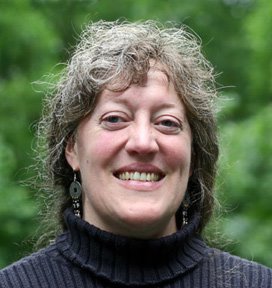I thought you'd enjoy my latest ponderings for the Adolescent Psych course that I have thoroughly enjoyed this summer.
The Question:
“B. Which adolescent problem detailed in your book do you personally see and the most threatening to our young people today? Explain your answer and remember to use the information in the texts and not just rely on your personal opinion. Do you know (or did you know) an adolescent with one of the problem behaviors, and if so, what has been the outcome for that teen?”The Answer:
Wow. This might be the most challenging question in the entire class.
All of the problems the text evaluates are serious problems … risk-taking behavior while driving, substance use, crime, depression, eating disorders. All of them have great potential to be life threatening. All of them are typical behaviors for adolescents, far too prevalent for my own comfort. And none of them appear to be “new problems” that can be attributed to the ills of today’s society. Even Shakespeare, in 1610, said, “I would that there were no age between ten and three-and-twenty, or that youth would sleep out the rest; for there is nothing in between but getting wenches with child, wronging the ancientry, stealing, fighting …” And anorexia was first identified in 1689, with the clinical diagnoses still the same today.
After much introspection over my coffee this morning, I believe that delinquency and crime are the largest threat to our youth today. Here’s why:
Adolescence-limited delinquents (ALDs) are criminals who engage in delinquency or crime for a shorter period of time, primarily through adolescence and emerging adulthood. They show no signs of problems during childhood, and few of them engage in criminal activity after their mid-twenties. ALD’s can be distinguished from life-course-persistent delinquents (LCPDs), who show a pattern of problems from birth onward, and tend to continue criminal activity well into adulthood. Studies in multiple cultures show that ALD types of crimes appear in part because of the role expectations of young males as they demonstrate readiness for manhood, as the Truk Island young men exemplify.
In the US in particular, courts and laws have become much tougher on even minor crimes, and more people than ever are being sent to jail instead of rehabilitation. The US has the highest incarceration rate of all the industrialized nations. There are also stark disparities in racial composition in our prisons, with African Americans accounting for fully 1/2 of prison population, but only 13% of the total population.
Punishment continues after prison sentences are completed. Former prisoners are denied social services, many potential jobs, even federal college loans for a minor drug offense. Reintegration into society is exceedingly difficult; if they lack opportunities to support families or selves, recidivism is almost inevitable.
Adolescents are developing their self-image, according to Erickson, and depend heavily on peers for that work. Crimes committed by youth and young adults are frequently done in a group. The search for excitement and sensation-seeking adventure may lead to activities that violate the law. It almost seems that the cards are stacked against our youth, males in particular. Combine racism to that volatile mix, and we end up with lots of incarcerated youth for minor infractions, and lives ruined. The potential for repeat crimes grows with each incarceration, in part due to peer contagion, where high risk youth are brought together who then form a delinquent clique (also normal adolescent behavior).
The costs to society, in terms of dollars spent on incarceration, recidivism, and the ruined lives of our young people, are too high to comprehend. The cost to society of repeat offenders, who return to a life of crime because they cannot find a way to make life work after incarceration, is also too high, in terms of property loss, life loss, and mental anguish, for families of criminals and victims.
There are no easy answers. Criminal reform is happening slowly, in a few places, and it appears to be working. Our text describes multisystemic approaches, which are cost effective as well as effective in reducing crimes. My hope is that we can make positive changes in prison reform and societal reform to correct some of the endemic societal ills that lead to incarceration.
To that effect, I work on prison reform as part of my religious beliefs. I also volunteer time in a program called Alternatives to Violence Project (AVP), which is a proven effective program to teach prisoners a different way of living and helps them avoid recidivism. The AVP program has also been carried out to the community, and has shown to be effective in preventing crime with adolescents, especially when run with a combination of former criminals and volunteers.
Do I know any adolescents currently going through this program? No, but I do know adults who have been in this place of delinquency and are incarcerated as a result of mistakes made in their youth. These are the incarcerated adults that I work with in AVP, and knowing them has in turn compelled me to work with all of my energy toward preventing crime in adolescents. It’s part of my decision to become a teacher.
Robin Slaw
Public Service Announcement:
To find out more, you can visit:
(AVP) http://www.avpusa.org/
(Prison reform) http://www.uua.org/socialjustice/socialjustice/statements/13397.shtml
No one can be perfectly free until all are free.
~ Herbert Spencer



No comments:
Post a Comment